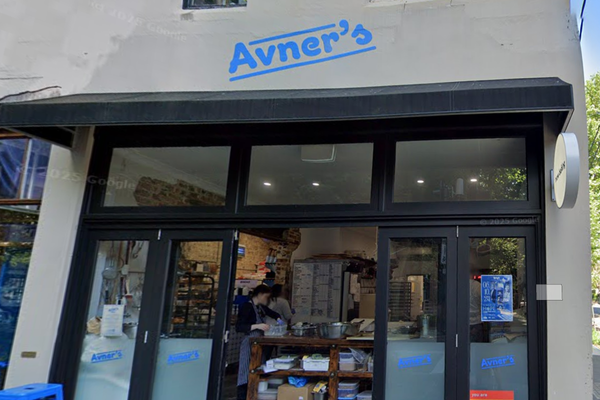
Face primer is one of those funny products that a lot of people have heard about, but far fewer can truly explain the intricacies of - like the offside rule of beauty.
This confusion comes down to a few factors. Firstly, outside of professional make-up artists’ kits, primer is relatively new to the scene. This is particularly true when you compare it to other complexion staples like your best foundation or setting powder.
Another reason primers aren't in everyone's makeup bags may well be fatigue with being told to use yet another product on our skin. Fair enough. It goes without saying there's no such thing as an essential cosmetic, but if you like wearing makeup, fancy making it last longer, and are up for trying something new, priming can be a useful trick - and an easy one.
How to use face primer so your makeup lasts
This bit's easy-peasy. Priming is your bridging step between skincare and make-up, so make it the first thing you do after your serum, moisturiser, and best facial sunscreen.
Most primers are very happy to be spread on with hands. Simply smooth a blob - similar to the amount of toothpaste you'd use - over your entire face, press it in and leave to set for a minute without rubbing. This setting time is particularly crucial if your primer is silicone-based, as it'll prevent the formula from separating into little beads on your skin.
If you’re working with a looser water-based primer, you can use a damp beauty blender to 'bounce' it on, or a densely packed brush. For these types of primers, the setting time is less important, and you could even try mixing a few drops in with your moisturiser to cut down on waiting time between layers.
It’s worth remembering that primers don’t have to be worn with other makeup. Many, particularly radiance-boosting formulas, do a great job of enhancing skin all on their own – which is great if you fancy a mostly make-up-free day.
How to choose the right primer for your skin
The great thing about primers is that they’re so varied, there truly is one for everyone. In the early days, the majority were of the mattifying and pore-blurring variety. They were great at gripping makeup, but not so good for glow.
Now brands have twigged that we need a very good reason to use yet another product, so we get primers that offer skincare benefits.
- For dry skin types: Look for water-based formulas. Ingredients like hyaluronic acid and natural hydrators such as aloe leaf juice will plump and quench.
- For oil-prone skin: Try primers with a thicker, drier feel. Minerals like silica and pearlite will control oil, while silicones temporarily “fill” pores for a smooth texture.
- For a glow: No matter what your skin type is, an illuminating finish is never a bad thing. This is particularly true if you find highlighters too sparkly, or are naturally on the oily side, and illuminating products look too shiny on top of your makeup.
- For uneven skin texture: Pick a primer with soft-focus particles - you’ll get a very smooth effect and a subtle radiance emanating through your base as if it’s all your own.

This liquid primer has a loose texture, a highly radiant finish, and comes in an unusual 8-strong shade range, so there's truly one for everyone. It can be used over makeup as a highlighter and works nicely on the body, too - no wonder it has countless fans (including our own digital beauty writer, whose Charlotte Tilbury Hollywood Flawless Filter editor recommendation has every detail you could desire.)

This is a classic mattifying style primer. It's got a refreshing gel texture and diamond powder to reflect light, blur pores, and disguise uneven texture. Follow with make-up, which will apply super-smoothly and last twice as long on your T-zone.

Laura Mercier’s primer range is a great example of how varied this product has become. All three are silicone-free and tackle specific issues as well as gripping onto makeup. I love Blurring, which creates a smooth matte layer, absorbs oil and nourishes with microalgae, and the silky Hydrating formula with pollution-busting antioxidants.

Anyone with skin tone anomalies they'd like to even out can benefit from priming before foundation. Pur’s collection of CC primers is very effective at neutralising the complexion using the opposing shade on the colour wheel. This green variant dials down flushing or mild rosacea, while smoothing skin texture into the bargain.
Do I really need to use primer?
In short, no. Nobody 'needs' to use any makeup, and if you prefer your beauty routine to be as low-maintenance as possible, then primer may not be for you. But if you like wearing make-up and want your base to work a bit harder, it could be worth a go. “I always use a primer as I do find make-up stays on longer and skin looks so flawless,” confirms A-List make-up artist Zoë Taylor
Primers were originally used by make-up artists for film, TV, and photoshoots. “I would use it by the litre in my work,” explains iconic make-up artist Laura Mercier. “At the time, it was a professional, milky, oil-based product and the furthest thing you can imagine from the light, comfortable primers we make now. That original heavy primer was used by professionals because it would grab the make-up and hold it in place forever under hot lights.”
“Primer really evens the skin texture and prepares it for make-up,” continues Mercier. “It makes your make-up look even and professional, and ensures that it’s going to stay on.” Around the early 2010s, makeup brands, including Laura Mercier’s own, began launching face primers for us to use at home, and these days just about every brand has a primer – and just about every face can find one to suit their needs.







